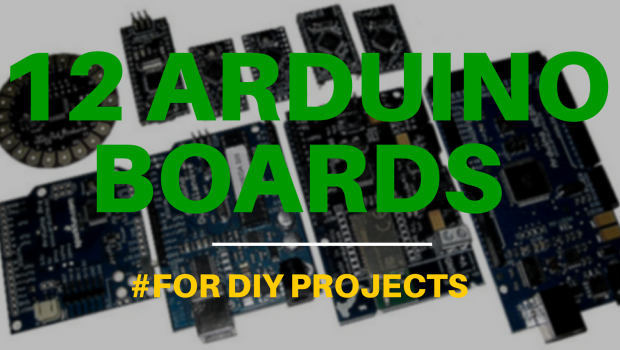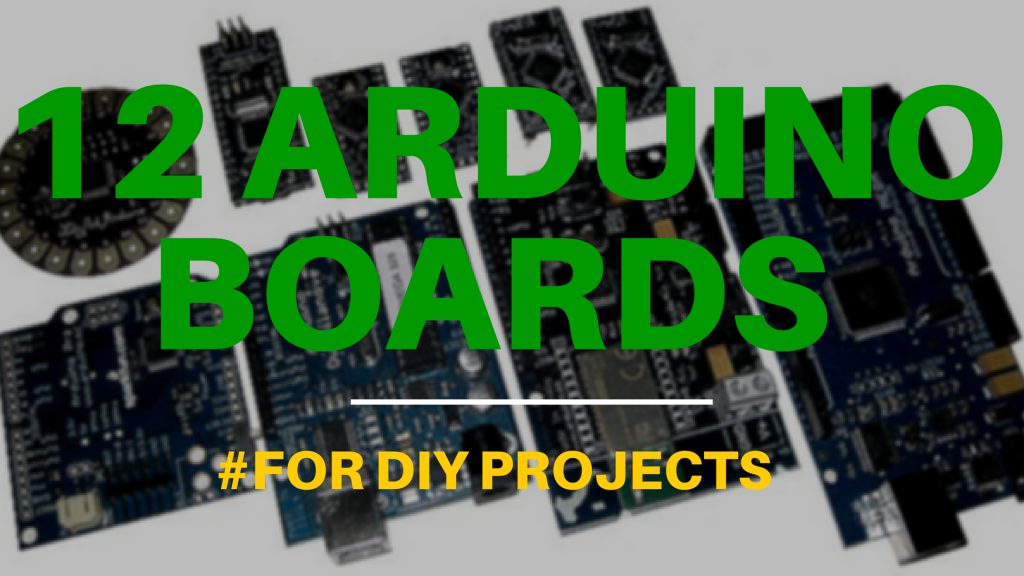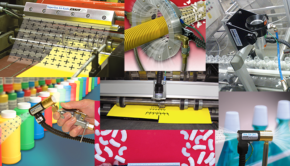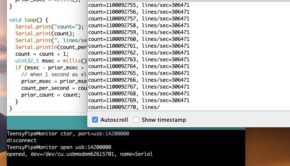12 Arduino Boards For DIY Projects
In reality, the Arduino boards come in a lot of varieties and this can make it difficult to select the best one to suit your purpose. In this article, the various types of Arduino board will be briefly examined. By the time you must have finished reading this article, you will be able to make better informed decisions as regards Arduino boards.
What is an Arduino?
Before we go any further, it will be wiser if I establish what Arduino really is. Arduino refers to the open-source electronics prototyping platform which is based on easy-to-use, flexible software and hardware. It is majorly used by designers, artists, hobbyists, and individuals that intend to create interactive environments or objects. In other words, it can read sensors when you load on some codes. It acts on the basis of control motors, inputs from buttons and can accept shields to expand its capabilities further. Simply said, almost anything can be done.
Types of Arduino Boards
The dynamic ATmega32U4 serves as the foundation for the Arduino Leonardo. It has 20 output and input pins, power jack, microUSB connection, a reset button, an ICSP header and 16 MHz crystal oscillator. Every necessary thing that supports the microcontroller is contained in the Leonardo. All you have to do is make use of an AC to DC adapter or battery or you could make use of a USB cable to connect it to a computer in order to get started. Also, the need for an extra processor is eliminated as a result of the fact that an inbuilt USB communication is offered by the ATmega32U4. Apart from being used as a COMport, it could also be used as keyboard and mouse.
This is one of the more popular ones and is based on the AT mega 328 MCU. It has an ICSP header 6 analog inputs, 14 input and output pins, USB connection, a 16 MHz ceramic resonator, a reset button and power jack. This type of Arduino board doesn’t make use of the FTDI driver (USB-to-serial). Rather, the AT mega 16U2 is programmed to serve as a converter of USB to serial.
The Uno also offers these new features in its revision 3:
- More powerful RESET circuit
- 1.0 pin out: including SCL and SDA pins which are close to the AREF pin as well as 2 other pins close to the RESET pin, the voltage adaptable IOREF; you must also note that the second pin is not connected.
This type has an ATmega32U4, together with Atheros AR9331 which supports a Liux-based distribution which is based on Linino which is an Open WRT.
It possesses an in-built Wi-Fi and Ethernet support, a 16 MHz crystal oscillator, a microSD card slot, an ICSP header, 20 digital input/output pins, microUSB connection, a USB-A port and three reset buttons. It can offer a computer network that is strong through its capacity to communicate with the Linux distribution onboard.
Due is the initial 32 bit ARM core micro controller – Arduino, which consists of 12 analog inputs, a JTAG header, 2 DAC (digital to analog), 54 output and input pins, USB OTG capable connection, an 84 MHz clock, 2 TWI, an erase button, an SPI header, a power jack, 4 UARTs (hardware serial ports), and a reset button.
This board operates at 3.3V unlike other boards, which is the highest voltage tolerable by the I/O pins. Any voltage that exceeds this could expose the Arduino board to certain risks.
- Arduino Mega (2560)
An ATmega 2560 is featured at the heart of the Arduino Mega. It consists of a power jack, 16 analog inputs, USB connection, a 16 MHz crystal oscillator, 4 UARTs, 54 digital input/output pins, a reset button and an ICSP header. Just make use of a USB cable to connect to a computer or use an AC_DC adapter to begin.
Officially, this is the first Arduino on wheels. It features 2 processing units, both affiliated to its 2 boards.
The operation technique and sensor reading are the responsibility of control board while the motor board is responsible for driving the motors. Both ATmega32u4 based units can be programmed through the Arduino IDE. Also noteworthy is the fact that the root configuration is somewhat similar to the Arduino Leonardo process because of the in-built USB communication; thus removing the need for an extra processor.
This was developed together with Adafruit and it is the ATmega32U4 that powers it.
This model consists of microUSB connection, 20 output and input pins, an ICSP header, a reset button and a 16 MHz crystal oscillator. Everything required to support the microcontroller is also included in this model and you can get started by just connecting it to a system with a microUSB cable.
- Arduino Esplora
This type of Arduino board is powered by the ATmega32U4 microcontroller that is obtained from the Arduino Leonardo. People who would like to start up before learning about electronics would find this model very useful.
It consists of several input sensors, on-board light and sound outputs. It also includes a light sensor, slider, a joystick, accelerometer, temperature sensor and microphone.
This was specially created for e-textiles and wearables. It is designed in a way to enable it to be sewn to fabric. The ATmega328V or ATmega168V forms the foundation for this board. Leah Buechley and SparkFun Electronics are the developers of this board. Also available is the LilyPad SimpleSnap, LilyPad USB and the LilyPad Simple.
This type of Arduino is meant for breadboards and other spacey projects. It is equipped with ATmega328 and is originally based on ATmega168. This board is made up of a 16 MHz crystal oscillator, 8 analog inputs and 14 digital input/output pins. The RS232 to TTL serial adapter, the USB Serial adapter or the other USB can be used to [program it.
The ATmega328 powers this board and it consists of an on-board resonator, spaces for attaching pin headers, 8 analog inputs, 14 digital input/output pins and a reset button.
In order to provide USB power and communication to the board, a 6-pin header may be connected to an FTDI cable.
This is a minute, breadboard-friendly and complete board which is based on ATmega168 or ATmega328. This board is similar to Arduino Duemilanove in terms of functionality; however, it comes in a different package. It operates with a Mini-B USB cable and lacks a DC power jack. Gravitech is the developer of this board.
Conclusion
This article serves to overview most of the Arduino boards. Now, you should have knowledge on the Arduino board that can suit your purpose. If you are still confused then Arduino starter kit is great way to get started with Arduino.
Have any question? Shoot us in comment and I will try my best to answer them.
About the author:
Azad Shaikh is Founder and Editor of Best On Internet. He likes everything tech and is also known as internet geek. You can follow Azad @azadshaikh (Twitter).
















